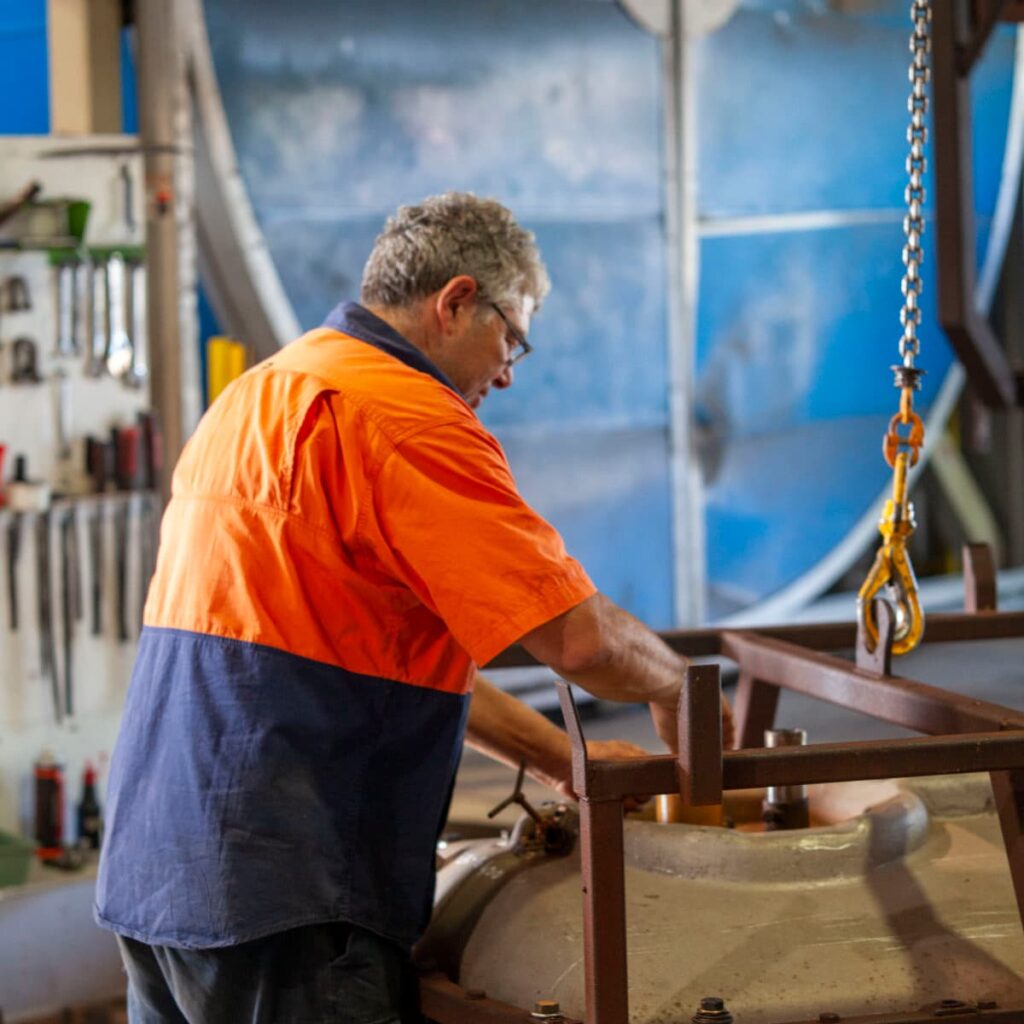Buying a New Tank – What Water Tank is Best?
Home / Buying a New Tank – What Water Tank is Best?
- globaltanks
- November 2, 2020
- 4 minutes
If you need to replace an existing tank or purchase an initial tank, you might be wondering what type of water tank is best? Buying a new tank should be done after careful consideration of which type of water tank is best suited for your home or your business. This includes size, placement, and importantly which type of material is best for the environment it will be placed in.
Below is a comparison of concrete, steel, fibreglass and polyethylene water tanks to help you decide what type of water tank is best for you.
CONCRETE TANKS
Concrete tanks have been used for both residential and commercial uses since the 1930s. Made from a mix of cement, water, sand or gravel, concrete can be a durable material in the right circumstances.
Pros
- Concrete is a very strong material
- Occasionally, concrete tanks can leak lime into the water, which actually makes the water less acidic. This can be beneficial as rain can have a more acidic pH than mains tap water.
Cons
- Underground concrete tanks require extensive excavation for proper installation, or for site works for tank footings. Therefore, there is much more excavation required than for fibreglass or poly tanks.
- As a result of this, concrete tanks can be more expensive to install.
- Over time, concrete can become prone to cracking, especially if the tank is installed near creeping tree roots or ground susceptible to movement.
- These water tanks can also become prone to leaking, once cracks start to appear. This leakage can result in the land around the tank becoming affected and, obviously, loss of water from the tank.
STEEL TANKS
Depending on what exact material your steel tank is made of, it can be extremely durable and relatively inexpensive. There are a few differences between galvanized steel and zincalume, which is made up of steel, aluminum and silicon.
Pros
- Steel tanks made of zincalume are extremely durable, even compared to galvanized steel water tanks. This material makes them very resistant to corrosion.
- These tanks can last several years even in harsh climates.
- Steel water tanks are made of very strong material and can have a long lifespan.
Cons
- Steel tanks can sometimes lead to corrosion and rusting, and this leaks the zinc coating into the water, which can give it a metallic taste or smell.
- They can be more expensive than the other water tank material options
- Once the tank is in place, it can be difficult to relocate as they are heavier than poly tanks or fibreglass tanks.
FIBREGLASS TANKS
Fibreglass is a composite material that is used to make a wide range of items. As a flexible material, this type of water tank is easier to install than concrete water tanks.
Pros
- These tanks are relatively light-weight and thin
- They are non-porous and resistant to chemicals; just as poly tanks are.
- Not likely to corrode, but some parts can become susceptible to corrosion.
Cons
- Fibreglass tanks are made of extremely rigid materials, a disadvantage of this is it can tend to be brittle in nature, being prone to cracking and leaking.
- These tanks can be more expensive than poly tanks.
- Fibreglass tanks are constructed using more than one part or component, which means there is a chance that these parts could leak at the seams.
- These seams can become prone to severe leaks over time, which can lead to cracking.
- (Longer lead time due to slower construction process )
POLY TANKS
Poly tanks or polyethylene tanks are an extremely durable tank. Polyethylene is a type of plastic that is one of the most commonly used types of plastic in the world.
Pros
- Poly tanks and poly water tanks are created in a single seamless mould, which means there are no seams that could potentially leak.
- Can easily be installed above or below ground level
- Non-porous and chemical resistant
- Does not rust or succumb to corrosion due to the material compounds in polyethylene
- The material these tanks are made of minimise the chance of algae growing inside the tank
- The plastic make-up of polyethylene is food-grade, meaning that it is completely safe to drink from
- Polyethylene is a flexible plastic, which means this type of water tank can be made to suit different shapes and sizes.
Cons
- At the end of a poly tank’s lifespan, it’s crucial to ensure that proper recycling is done so that the tank does not end up in a landfill. These are the only types of water tanks that can be fully recycled. This can really be seen as a pro, as although proper recycling management is required, you’re doing good by our planet.
It’s safe to say poly tanks are the best option when deciding what type of water tank is best for your situation. When buying a new water tank, it’s important to think about the position of the tank, the environment it will be in, and what lifespan you expect to get from your new water tank. For more detailed information on what type of water tank is best for you, reach out to us today.

